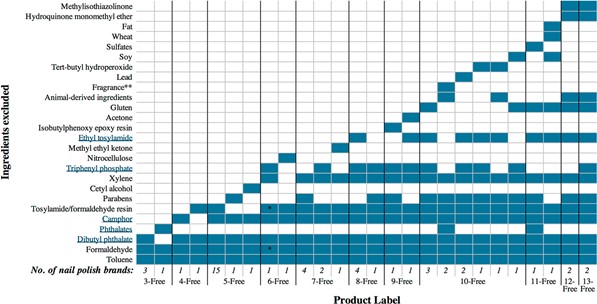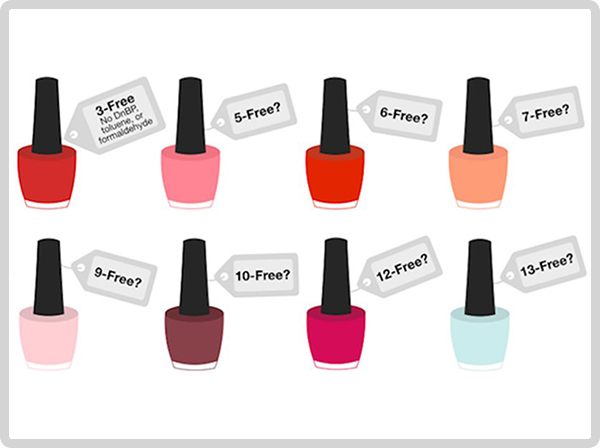The number of 3-Free, 5-Free, 7-Free, 10-Free and even 13-Free nail polishes have proliferated in recent years but new research shows the labels aren’t always accurate − and even if they are, the polishes aren’t necessarily toxin-free or any safer than their predecessors.
After investigating the ingredients and labelling of 40 popular nail polishes in the US, Harvard University researchers concluded that it is “challenging for consumers and nail salon workers to know what these labels really mean for health” as there is “little standardisation or validation” of ‘n-Free’ claims.
According to the study, published in the American Chemical Society’s Environmental Science & Technology journal, ‘n-Free’ nail polishes began appearing on the market in the early 2000s in response to consumer concerns about the plasticiser dibutyl phthalate (DnBP) which is a known “endocrine-disruptor.”
“In response, nail polish manufacturers began switching to other plasticisers [which improve flexibility and chip resistance],” the report said.
“Many labelled the new polishes as ‘3-Free’, meaning the products lacked the ‘toxic trio’ of DnBP, toluene and formaldehyde.
“The trend spread, and labels now tout the absence of as many as 13 different chemicals, though there’s little standardisation about which chemicals are excluded.
“But recent evidence shows that some substitute ingredients, such as the plasticiser triphenyl phosphate (TPHP) may also be harmful.
“This raises the concern that one toxic chemical is being replaced by others, a practice known as ‘regrettable substitution’.”
During the study, the researchers tested the nail polishes for 12 phthalate and 10 organophosphate plasticisers and compared their findings with the ingredients listed on the nail polish labels.

The red and pink nail polishes were selected from 12 brands that “were representative of both the nail polish market and the different label types”.
“We found labels ranging from 3- to 13-Free,” said the researchers.
“We identified six different 10-Free label definitions, as well as three different definitions of 5-Free and 7-Free.
“Although all 10-Free product lines removed seven of the same chemicals (DnBP, toluene, formaldehyde, camphor, tosylamide/formaldehyde resin, parabens, and xylene), the remaining three chemical exclusions varied.
“For example, TPHP was only excluded in four 10-Free definitions and phthalates were only excluded in one definition.
“Other exclusions by only some of the 10-Free product lines were ethyl tosylamide, gluten, animal-derived ingredients, fragrance, lead, tert-butyl hydroperoxide, and soy.”
The study, “the first comprehensive evaluation of nail polish labels and their definitions”, identified nine nail polishes with “undisclosed plasticiser levels above 10 μg/g” and five with “undisclosed plasticiser levels above 100 μg/g”.
The authors concluded that the original practice of promoting nail polishes with a standardised ‘3-Free’ label has been replaced with an expanding list of inconsistent n-Free labels as:
- a label can be defined differently by brands
- the ingredient exclusions are usually not validated by a third party or justified for their relevance to health
- new label types are often not consistent with preceding labels in regard to the ingredients excluded
“Our results showed that the number of ingredient exclusions in n-Free labels does not always translate to the degree of reduced toxicity,” the said.
“For example, the exclusions of animal-derived ingredients, gluten, fat, or soy may not impact nail polish toxicity. Thus, the expanded labels can cause confusion about the meaning of the labels, which originally intended to denote the number of toxic nail polish ingredients removed.”
The researchers also stressed that some of the “plasticisers disclosed in the ingredient lists of our samples included alternatives that have been less studied for toxicity”.
“We should remain cautious about the understudied toxicity of plasticisers being introduced into nail polish,” they said.
“Overall, our results indicate a possibly recurring pattern of substituting plasticisers without evaluating the replacement for toxicity.”

